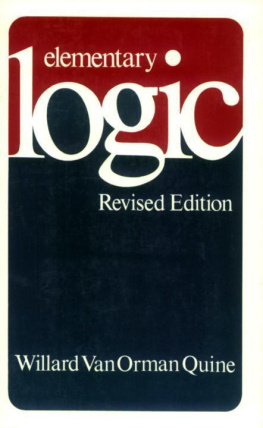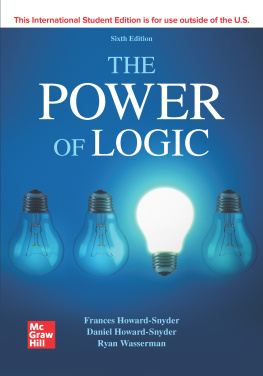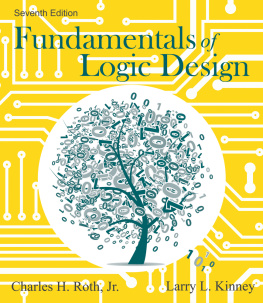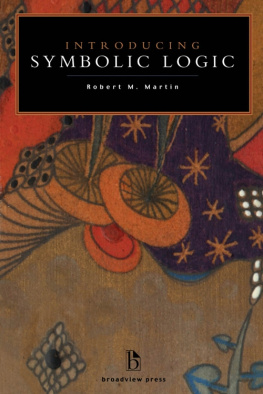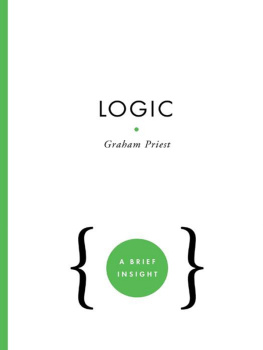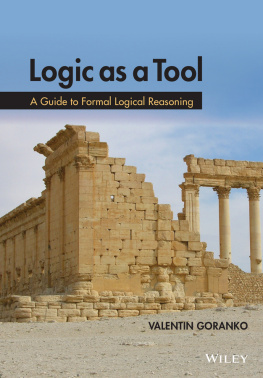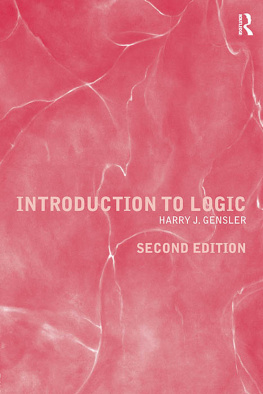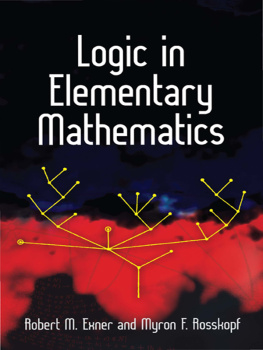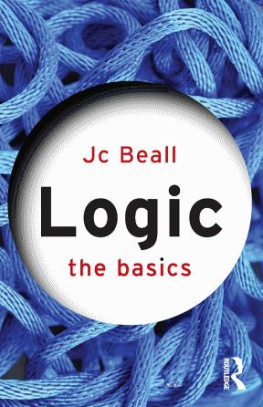Revised Edition
WILLARD VAN ORMAN QUINE


PUBLISHERS' SAMPLES of fifty-five logic textbooks have accumulated in my office, all introductory and in English. Quantification theory, or the first-order predicate calculus, is covered in one way or another in most of them. Forty years ago it was covered in none. In my elementary onesemester course I was resolved to impart at least that vital minimum of modern lore, along with the mandatory traditional material; and no text existed to the purpose. My Mathematical Logic had just come out, but it was too technical. I wanted a method which, though precise and deductively complete, could be quickly learned and easily applied. I devised what I could at the time and made a small book of it in six weeks as an emergency measure. It was published by Ginn and Company in 1941 as Elementary Logic. I used it for the formal part of my semester courses, supplementing it with one or another traditional logic textbook for traditional themes.
It differed much from the little book that is now before us. When Ginn let it go out of print, I was content to acquiesce; for I had meanwhile arrived at alternative techniques that were more to my liking, and had just written Methods of Logic. Likewise I demurred years later when other publishers asked to reprint Elementary Logic. However, it was their expression of interest that set me to thinking of a revised edition. Methods of Logic afforded full sustenance for an intensive semester course or more; Elementary Logic could still be useful as affording just a brief logical component in a semester course dealing also with other matters, possibly philosophy or English composition or computer programming.
In 1965 Harper and Row brought out the revised edition in paperback and Harvard University Press in hard cover. Harper and Row has now discontinued the paperback and Harvard, to my gratification, has taken it up.
In an adjoining preface it is remarked that the proof procedure used for quantification theory in this edition came from an appendix to Methods of Logic. That was an appendix of 1955 to an accidentally delayed second edition of Methods (1959). It was devoted to showing, after Godel, that quantification theory admits of a complete proof procedure; and the argument went through with unprecedented ease when applied to this particular proof procedure. Since it is also an easy proof procedure to explain, justify, and use, I revived it for the revised Elementary Logic. More recently I elevated it also to the status of "main method" in the third edition of Methods, and used it there as the basis on which to justify a sheaf of alternative procedures. The two books have progressed thus alternately in a pedestrian sort of way, like feet. The present one remains as it was in 1965, however, except for the addition of this preface.



THIS LITTLE book provides a single strand of simple techniques for the central business of modern logic, seldom looking to the right or to the left for alternative methods or peripheral problems. Basic formal concepts are explained, the paraphrasing of words into symbols is treated at some length, a testing procedure is given for truth-function logic, and a complete proof procedure is given for the logic of quantifiers. At the end there are brief glimpses of further matters. The book is meant as a convenient encapsulation of minimum essentials. Students might use it who need a bit of logic as a prerequisite for some other subject, or in preparation for a general qualifying examination, or as part of a survey course. The book is for readers who would spare themselves the breadth of coverage afforded by my Methods of Logic, not to mention advanced works.
This edition, appearing after twenty-four years, is much revised. Fully a third is new. There is some change of notation, much updating of terminology, and a nearly complete turnover in crucial techniques of testing and proving. Some of what was novel in the first edition, and is here superseded, had a certain appeal: the extrication techniques, perhaps, and the singularity transformation. Other devices are favored here as being more customary and no less efficient.
The testing procedure used here for truth-function logic is the time-honored method of alternational and conjunctional normal form. The proof technique used here for quantification theory is one that was noted in (V) of the Appendix of Methods of Logic: a matter simply of proving the inconsistency of one or more prenex schemata by instantiating until a truth-functional inconsistency is accumulated. When ease of inculcation, ease of justification, and ease of application are added together and averaged out, it is far and away the easiest proof technique for quantification theory that I know. It derives from the tradition of Skolem and Herbrand.
The Introduction and Chapter I are unchanged except for negligible emendations. Chapter II is little changed in its first seven sections, 14-20, except terminologically; "compositional" becomes "truth-functional," "frame" becomes "schema," "statement variable" becomes "letter." The rest of old Chapter II, viz. 21-30, gives way now to 21-27, whereof two thirds is new writing and one third is drawn from the old pages. Chapter III carries over unchanged except for adjustment of section numbers, restoration of parentheses in connection with quantifiers, revision of the end of what is now 36, and modernization of terminology in what is now 30. Chapter IV continues easily recognizable only through the first four of its original fifteen sections. These four are already conspicuously modified by changes of terminology (here "stencil" becomes "predicate") and occasional further revisions. The rest of the chapter, old 46-56, gives way now to new 43-48, which echo the old only in occasional paragraphs.
Readers acquainted with Methods of Logic will find reminders of that book in some of the examples. But these things have not been borrowed from there. They were in the 1941 edition of Elementary Logic and were borrowed thence for Methods of Logic with acknowledgment in 1950.
Those readers and others will wonder, when they get to p. 108, at my defining validity as truth under all substitutions; for they know that the validity of a quantificational schema consists in its being fulfilled by all classes and relations. Truth under all substitutions looks wrong on two counts. The scope of "all substitutions," unlike that of "all classes and relations," varies with the resources of one's vocabulary; and even if those resources are great, there will, by a theorem of Cantor's, be classes and relations in excess of what can be portrayed in substitutions. The fact is, though, that if our vocabulary of available substitutions includes the notations of elementary number theory, any quantificational schema that is true under all substitutions will also be fulfilled by all classes and relations. This follows from Hilbert and Bernays, Grundlagen der Mathematik, vol. 2, pp. 234-253, and it is why I can define validity as I do on p. 108. 1 am happy to, for it makes for a shorter story. Advanced students should know both accounts, of course, and why they agree.

